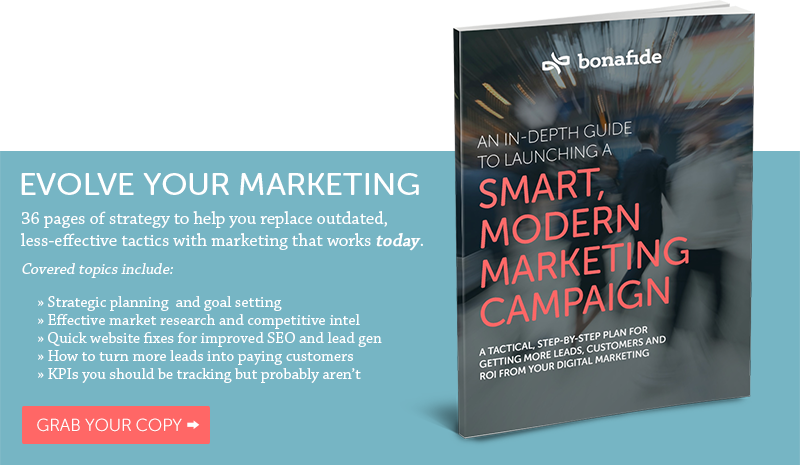
We all love to see solid marketing ROI; it’s the bedrock of every business. But too often, your return on investment is buried deep beneath layers and layers of data. If your content marketing ROI is leaving you wondering if it’s worth the effort and the budget, then it’s time to take a pinpointed look at your metrics to determine your content marketing profitability.
Content marketing ROI is not always as forthcoming as we’d like it to be. But while 75% of content marketers have a difficult time determining the return on their content marketing investment, the 88% of B2B marketers using this tactic in their marketing strategies are seeing 6 times more conversions than their non-content savvy competitors. A relational approach is the new face of marketing, and content marketing hits it way out of the ballpark.
More businesses than ever are investing their marketing spend into developing solid content that informs, educates, and entertains. Outdated banner ads and keyword-stuffed copy is so blasé—and in poor taste, which tends to drive customers away. Not to mention, nearly 200 million people are using ad blockers to improve their online experience. In short, content marketing is replete with potential. The key is to determine whether your content is boosting your bottom line or just draining your marketing dollars—and how to optimize it to ensure the former.
The content cost
Content marketing costs money. Between copywriters, editors, researchers, analysts, designers, paid social promotions, distribution, and promotion—and the time it takes to manage and oversee the entire process—it’s no surprise that companies not yet on the content marketing bandwagon are hesitant to jump in.
Without documented content marketing ROI to back up their efforts, it may seem like a lost cause. But content marketing is key to your inbound marketing strategy, and to greater ROI.
You just have to know how to calculate the returns and optimize your strategy for the greatest gains and lowest acquisition costs.
Why content marketing is important
Traditional marketing is disruptive, and today’s consumers don’t have time for that. They want a more streamlined approach to doing business with brands. That’s why content marketing is so important to the overall marketing strategy. It’s a way of getting in front of customers in an unobtrusive way that’s proven to drive web traffic and conversions.
Content marketing is key to developing thought leaders within companies and communities, and providing a voice and personality for companies that have traditionally been seen as profit-hungry entities just out for a sale. Consumers want to do business with people, not corporations. That’s why a relational strategy is key to attracting the right customers and selling your business to them in an unthreatening way. And—bonus perk—search engines tend to favor businesses that consistently post quality, keyword-rich content, and move them further up in keyword searches and into customer view.
Having a content marketing strategy in place is essential to optimizing your ROI. Most marketers who experience poor results admit they don’t have a particular strategy in place to guide their efforts. The rest simply don’t know how to measure content marketing ROI and apply their findings to improve their results.
How does content marketing work?
Content marketing is a lot like fishing. Bait your hook with what you know about your audience, packaged as actionable, shareable content. As they begin to engage with your content, you’ll reel them into your marketing funnel in a natural, struggle-free way. This inbound marketing tactic bypasses the walls customers have built against annoying pop-up ads, pushy sales people, and other traditional marketing tactics. Essentially, content marketing gets to the heart of what today’s consumers care about by providing business solutions through education, information, and entertainment.
Determine your content marketing ROI
When marketers see less than optimal sales, they often wrongly assume their content isn’t paying off and ditch the effort. But ROI can’t always be measured in conversions alone. Some overlooked consumption metrics include page views, video views, document views, downloads, and social chatter.
These are indicative of brand awareness. And these indicators should help inform your strategy. By gauging what your audience wants more of, or what they’re seeking based on the data, website visits, clicks, and more, you can learn about your audience and tailor your strategy to give them more of what they want. Engagement is a huge part of the climb. If your audience is engaging with your content, you’re on the path to a successful campaign.
How much is that blog costing you?
Without getting too technical, if you’re seeing more organic traffic to your site, your content is likely doing its job. It may not be generating conversions yet, but it’s being seen by audiences and attracting them to your site. These top-of-the-funnel (TOFU) visitors are seeking solutions, and they're looking to you to see if you can provide them.
Create a strategy to drive website visitors further into your marketing funnel, which will drive them closer to converting into paying customers. Ergo, your content marketing will start to pay off in a real way.
“The technical”
While there’s no specific number we can place on the right customer acquisition cost of content marketing, there are a few calculations you can make to see if your content marketing is contributing to your bottom line or draining your budget (and if that’s the case, what you can do about it).
Determining appropriate acquisition costs depends a lot on whether your customer is a one-time customer, or if they'll be an ongoing, lifetime customer. You can follow your customer and sales to your bottom line by tracing out a formula to determine the point at which the cost of a single customer balances out and exceeds the cost of acquiring them.
First, you need to know how many months of revenue you can afford for marketing to new customers. That budget should generally be based on a 6-18 month time frame. Multiply the recurring monthly revenue from a customer by the number of months of revenue you’ve dedicated to marketing. That’s how many months a single customer must remain a monthly customer for them to become profitable.
Next, add up all your costs for content marketing, including salaries, tools, blogging platforms, web hosting, and freelancers. Divide that by the number of new customer you’ve acquired. If the amount you’re paying per customer exceeds the marketing budget you’ve set per customer from the first step, it may be time to rethink your content marketing strategy.
is content marketing working for you?
Apply the info to see how it’s working for you. If you find that your content marketing campaign is hurting your bottom line, that means there’s a lost opportunity there—because content marketing, when done right, can be an amazing asset to your marketing strategy.
Rediscovering the opportunities
Content marketing isn’t always a quick fix. It often takes time for content to penetrate the market and drive results. Having the right partner can keep your costs lower and help streamline your way to profitable ROI. Partnering with an inbound marketing agency can help measure content marketing ROI to illuminate lost opportunities. They can address deficiencies to initiate proven strategies for content marketing success and drive results for your long-term success.
Content marketing costs money. But by understanding how to measure content marketing ROI and derive actionable data, you can drive serious long-term ROI and get more bang for your buck for each customer.

